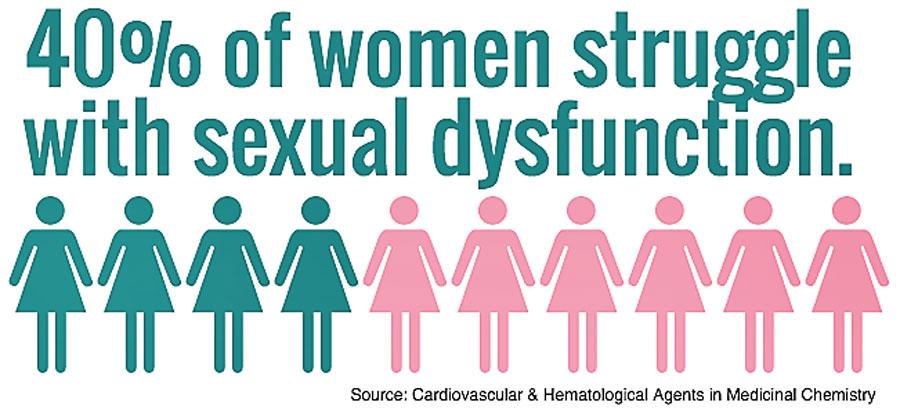Reply To:
Name - Reply Comment

 With advances in technology and medical research we are in a better positon to address the female sexual orgasmic and pain disorders that are much discussed today. For this purpose we invited DR Kanishke Samaranayake who has a Fellowship in Cosmetic Gynecology by American Aesthetic Association and holds qualifications like MBBS MD (OBS&GYN) MRCOG (UK) MSLCOG FMAS, Diploma in Advanced Gynecological laparoscopy (Germany) while being a Consultant Obstetrician & Gynecologists at DGH Nawalapitiya and Asiri Hospital, Kandy.
With advances in technology and medical research we are in a better positon to address the female sexual orgasmic and pain disorders that are much discussed today. For this purpose we invited DR Kanishke Samaranayake who has a Fellowship in Cosmetic Gynecology by American Aesthetic Association and holds qualifications like MBBS MD (OBS&GYN) MRCOG (UK) MSLCOG FMAS, Diploma in Advanced Gynecological laparoscopy (Germany) while being a Consultant Obstetrician & Gynecologists at DGH Nawalapitiya and Asiri Hospital, Kandy.
What is sexual dysfunction?
Persistent, recurrent problems with sexual response, desire, orgasm or pain — that distress you or strain your relationship with your partner — are known medically as sexual dysfunction.
Many women experience problems with sexual function at some point, and some have difficulties throughout their lives. Female sexual dysfunction can occur at any stage of life. It can occur only in certain sexual situations or in all sexual situations.
To understand better we should know the answers to the following questions.
What is normal female sexual cycle?
Desire: Defined by an interest in being sexual and in having sexual relations by oneself or with an appropriate partner
Arousal: Refers to the physiological, cognitive & affective changes that serve to prepare an individual for sexual activity (e.g., penile tumescence and erection, vaginal lubrication, expansion & swelling of vulva)
Orgasm: Refers to climatic phase with release of sexual tension and rhythmic contraction of the perineal muscles and reproductive organs:
Sense of ejaculatory inevitability in males followed by ejaculation
Contractions in the outer third of the vagina
Resolution: Refers to sense of muscular relaxation and general well-being; men are physiologically refractor while women may respond to further stimulation
What is female sexual response?
Indicator of readiness for accepting an intimate relationship
Vascular congestion in the pelvis
Vaginal lubrication
Labia minora may darken
Clitoris hardens leading the vaginal hood (prepuce of clit) to appear enlarged
Causing the vulva to lengthen and widen
Areola hardens Breast tumescence & nipples become erect

What is G spot?
Experts on female anatomy contend that there is an area in the outer third of the vagina, also responsible for orgasm, the Grafenberg or the G-spot
Located in the front of the body, 2” from entrance of the vagina
Sexual Dysfunctions by Phase of the Sexual Response Cycle
Why it is so difficult to assess the Prevalence?
Vague descriptions (i.e. definition of premature ejaculation/sex desire interest)
Sexual problem may be perceived as bad
Effects of social norms
Unavailability of regular sex partner
Comorbidity (sexual problem may be secondary to primary psychological or medical issue)
How bad is the problem?
HSDD (hypoactive sexual desire disorders)
For men & women concurrence rates of HSDD with other SDs is an estimated 41% and 47%
Arousal Disorders
Overall, prevalence range of ED is 10-20%
Orgasmic Disorders
Prevalence of PE is approximately 30% across age groups (GSSAB)
Other disorders
Prevalence of pain disorders 1%-21% in women
Why we are suffering with sexual dysfunction?
Dysfunction in desire and arousal is usually treated with multi-disciplinary approach
Here will focus on mainly treatment on orgasmic dysfunction and pain disorders which is mainly treated by cosmetic and reconstructive gynaecologists
G spot augmentation
This is an area just roughly 2 cc from the hymnal ring. Crowded with nerve endings. Can become less sensitive due to changes that take place due to age. Following augmentation with various types of injectable, most of the people are having high quality relationships. Can be done as outpatient office procedure by a cosmetic gynaecologist.
Patient can come in to clinic and get it done by simply numbing the area. May staidly walk back to her home and can have immediate intimate relationship with superior experience.
Clitoral augmentation
Clitoris is the area where females are highly sensitive to sexual stimulation. Lying in between upper ends of labia minora which is covered by a skin fold – clitoral hood.
By exposing bulk of the clitoris we can make female more orgasmic. Which involves surgical procedures call clitoral unhooding or we can mobilize down the clitoris so that it can more in contact with penis giving superior pleasure. These procedures also done as out patients without staying in the hospital by aesthetic or cosmetic gynaecologists.
Vaginal tightening
It is a common complain after a vaginal child birth that feelings are different from what it used to be. Complain can come from either partners. Initially because of pregnancy changes which usually resolves within six to eight weeks. But if structural damage has occurred because of difficult delivery or repeated child birth or just because of getting old repair is needed to bring it back to juvenile state.
Can be done by an operation call perineal repair or more extensively with additional tightening of posterior vaginal wall. Which still can be done as outpatient day case but need some time to recover. But vaginal tightening which is done with machines call Radio frequency ablators results are immediate. May wean off with time and need sequential procedure after by which results last long. Similar outcome can be obtained by using laser techniques but immediate results are not possible as need some abstinent period of six to eight weeks.
Valval reconstruction
Sometimes anorgasmia is due to psychological reason as some female are worried about the appearance of their genial area. Again trim miming of asymmetrical or large labia minora can be done with surgical procedures.in some cases orgasmic dysfunction is because of thinning of labia majora area as result of aging or loss of hormones which can give rise to pain during intercourse with loss of interest.
Filling the areas with fillers, blood products or fat can be done with better Cushing effect hence the better satisfaction.
Treating penetrative pain disorders
This is characterised by tightening of muscle around vaginal opening anticipating sever pain. It’s highly prevalent and ranging from mild discomfort on penetration to an extent where penetration is impossible after being married for years. Can be treated with ease in expert hand with injecting a product call botulinum toxin. Results appears to begin after treatment and gradually peaking to its best effect.
Reconstructing child birth defects
Sometime sexual dysfunction can occur due to changes and trauma of child birth.
After a difficult vaginal birth some time it’s so common to feel laxity for both partners and sometime the pain at the episiotomy site (place where small cut is made to make easy child birth) laxity can be treated as described above if its last long beyond six to eight months.
Episiotomy scar can bring back to normal by injectable and minor surgical procedures. With less pain and tighten feeling and nice appearance.
Sometime changes that occur in abdomen (stretch Marks/striae) and caesarean scar can be a thing of psychological burden to your nice appearance which can hinder a good relationship. With the new advanced treatment procedures like gas treatments and injectables, these change bring you back to normal for a healthier life.
Finally most important thing in treating sexual dysfunction is that having an open discussion with your doctor and bring out the things that what exactly causes trouble to you and what are your expectations.